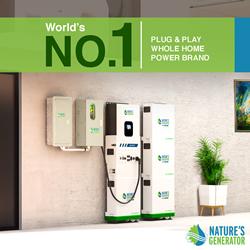Echo Captures More Untapped Solar Energy
Suppliers Converging on Electricity Distribution Automation Opportunity
U.N.: Renewables could be 80 percent of energy by 2050
Solar Technology Continues To Dominate Investment In Q1
First Solar: European Market Is A Mess, Q1 Sales Flat
Mitsubishi Opens Pre-Orders for i-MiEV Electric Car
Oil Giant Total to buy 60% of SunPower for $1.38 Billion
MIT Researchers Unveil Transparent Solar Cell
The ESD (Engineering Society of Detroit) Ride and Drive of the Chevy Volt
Introduction to JOINT IMPLEMENTATION - JI
Careers in the Clean-Tech Industry
Reading the fine print of BrightSource's $250 million IPO
U.S. offers loan aid for world's biggest solar plant
Ford names Top 25 EV ready cities in the US
Google Invests $168 million in BrightSource Energy's Mojave Solar Plant
Records 4216 to 4230 of 5397
First | Previous | Next | Last
Featured Product

